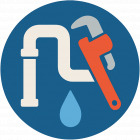Plumbing for Old Homes (Victorian & Older): Common Problems and Modern Fixes
Owning a Victorian or older home is a little like living in a charming time capsule, until a clog, leak, or rusty pipe reminds you the plumbing is from another century. Here’s a practical guide to the typical problems you’ll see and modern fixes that actually work.
Common problems, plain and simple
Older houses often have galvanized or cast iron pipes that corrode, low water pressure from narrow piping, and antiquated venting that causes slow drains and gurgling toilets. Toilets and sinks may clog repeatedly because of old drain runs and tree roots infiltrating clay lines. Water heaters in vintage homes tend to be original or long in the tooth, which raises the chance of a water heater leaking or sudden cold showers.
Modern fixes that respect the house
- Pipe replacement with PEX or copper: Faster to install, corrosion resistant, and less invasive than ripping out plaster walls. PEX bends around studs, meaning fewer holes.
- Relining old sewer lines: A trenchless liner can seal cast iron or clay without full replacement, cutting disruption and cost.
- Updated venting and traps: Proper venting improves drain performance and stops toilet gurgles; replacing worn traps prevents leaks under sinks.
- Drain cleaning techniques: Mechanical snaking for clogs; hydro jetting for heavy grease or root intrusion; enzyme treatments for maintenance between services.
- Leak detection and targeted repair: Electronic leak detection finds hidden leaks in floors or walls, so you fix the source rather than chasing symptoms.
- Water heater options: Consider tankless systems (brands like Rinnai or Navien are popular) for endless hot water and a smaller footprint, or replace an old tank style heater with a modern high efficiency model and proper expansion tank.
When to DIY and when to call pros
Small clogs, replacing a faucet washer, or tightening a visible joint can be DIY. For sewer relining, major repiping, leak detection inside walls, or water heater installation, call a qualified local plumber or plumbing company. Emergency plumber response is crucial if you find major leaks, loss of hot water, or sewage backflow.
Tip: Install accessible shut -off valves for each fixture, and label them. In emergencies this trumps heroic DIY.
A thoughtful retrofit balances preserving period features with modern reliability. Start with a professional inspection, prioritize leak detection and failing pipes, then plan upgrades that protect the house for decades to come. You’ll keep the character, and stop the surprises. #VictorianPlumbing #LeakDetection #PlumbingTips
